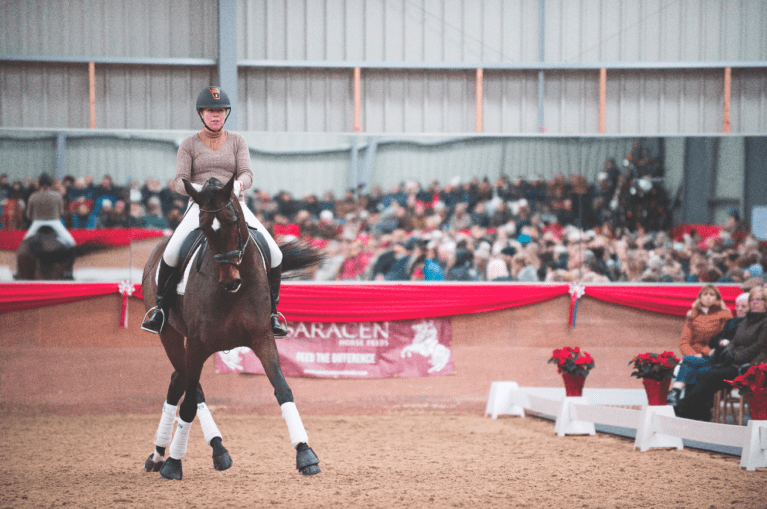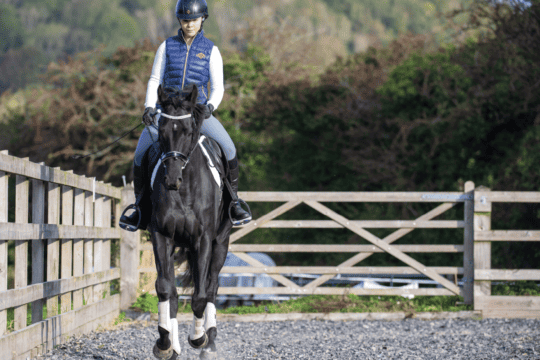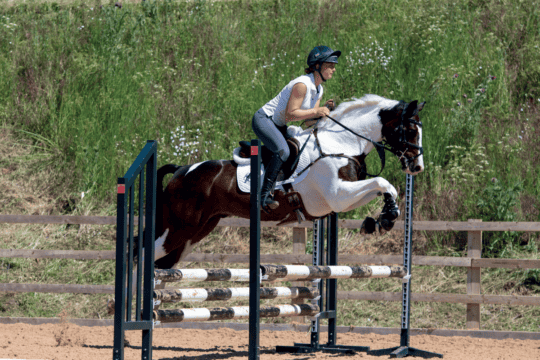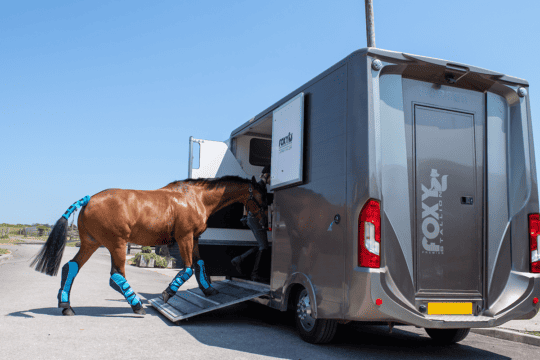-
Riding Schooling and Training
-
Health and Veterinary
-
Management
-
Mind Matters
-
Buying and Selling
-
Insurance Advice
FAQs
Featured Professional
Too much too soon or too little, too late? Carl Hester helps you to plan the next stage of your horse’s education

As your horse’s training progresses, it’s important to start to look for a more advanced understanding of the work he’s doing and a change in his outline. Whereas with a five-year-old I keep it simple and work on creating engagement through the use of transitions, I want to see a six-year-old using himself, starting to understand the fundamentals of self-carriage and developing enough maturity in his balance that he can execute lateral movements.
TOP TIP – It can be exciting to find that your youngster has a talent for a certain gait or movement, but don’t get caught up in it – have the self-discipline to work on what he can’t do, not just what he can do.
Thinking forward
I recommend carrying a schooling whip, but with a caveat – it should be used as a corrective aid or a refinement of your aids, rather than as a tool to make your horse move forward. Also, it’s important to put your whip down sometimes to ensure that your horse is truly in front of your leg. It’s not uncommon to see riders get great marks in qualifying tests, but when they get to a championship where whips aren’t allowed, their scores drop by 10% and they practically have to be carted out of the arena on a stretcher while their horse trots back to the lorry having not even broken a sweat. If you rely too heavily on a whip for forward motion, your horse will know when you don’t have it and react accordingly.
For me, it’s important that horses are sensitive to the whip rather than numb to continuous tapping. This is because the whip is a crucial aid for developing Grand Prix movements such as piaffe, as it helps to single out each leg. If I hold the whip against my horse’s leg, he should lift that leg, but if he’s spent his ridden life being desensitised to it, then he’ll switch off and those reactions will be gone. Whatever your ambitions, selectively using your whip allows it to remain an effective aid.
Squaring up
Something many riders find difficult, but that’s on every dressage test you’ll tackle, is the square halt. For your horse to be able to consistently execute a square halt, he first has to know what it is. When I rode for Dr Bechtolsheimer, square halts were something that every horse on the yard had to do whenever they were being handled, when they were being groomed and when we got on. As a result, they understood that they had to have a leg at each corner.
Once your horse has learnt that it’s possible to stand in this way, the focus must shift to the way you ride the transition to halt. Many riders try to keep their horses’ trot as forward as possible into halt, which isn’t necessarily incorrect, but this has to be done intuitively. If you ride forward on a long stride and ask for an immediate halt, your horse’s legs will stop wherever they’ve landed. A shorter, active step creates a balanced, symmetrical halt.
When riding into a downward transition, it should feel as though your horse’s neck comes up higher, his stride shortens and his hindlegs step underneath him. Think about putting one tiny walk step in before you halt. If your horse starts to drop behind your leg or you lose the feeling of being able to move one leg at a time, correct it by riding forwards, asking for transitions within the gait, then reapproaching the problem.
Age concerns
If you have a young horse, it can be tempting to get into the mindset of aiming for age classes, which in recent years have become more and more popular. While they can be good fun, it’s important not to become too focused on them. It can be demoralising for a one-horse rider to try to contest these exacting classes, as each horse learns at a different rate and in a different way, and it takes a high degree of natural balance in the horse, and quite an experienced rider, to be able to put all the pieces together in time. Professional riders are able to be pragmatic about their horses’ success in the age classes because we have the luxury of being able to get on multiple horses, so if one horse is going through a tricky phase then we can take him for a hack instead and focus on schooling another. You can’t let the results ruin your life, because it’s normal to have peaks and troughs.
Several of my Grand Prix horses, including Nip Tuck and Donnersong, were never placed in age classes, even though both went on to international success. You have to learn to accept the marks you get and use the feedback to practise and improve, and don’t cling onto any fixed ideas about what your horse should be doing.
TOP TIP – Try to get someone on the ground to help you with the feel of a square halt. They can tell you immediately which leg needs to be adjusted so that you can make the correction straightaway.
A matter of education
Many of the questions in a dressage test are testing your accuracy and correct riding. To answer them and earn a respectable score, you don’t need a fancy horse. A 12.2hh native pony will score as well as a fancy warmblood if they both halt cleanly and squarely, so don’t get discouraged if you ride a non-traditional dressage horse or if you haven’t got the budget that some of your fellow competitors do. Some top horses have come from relatively humble backgrounds – Nip Tuck cost just £800 as a youngster. Yes, you can buy fabulous movement, but
you can also train it, and no amount of expression or suspension will win a dressage test if your circles are egg-shaped and your halts are hovering near the three-quarter line.
Lateral thinking
Last month, I told you that straightness is the most important concept you’ll work on with your horse. Since then, you should have been identifying your horse’s stiff side and working to stretch out the opposite side, creating a more laterally supple picture. The next step, and one that I work on throughout my horses’ careers, is to teach him a more sophisticated level of straightness through lateral work.
Correct lateral work is as much a test of your horse as it is of your riding. When you think no one’s watching, it’s very easy to cheat your way through the sideways steps by overbending your horse’s neck and letting your hand turn over and become what I call a handbag hand. But it’s worth the extra effort and time spent riding these movements correctly, as they can help improve each and every aspect of your ride. For example, I use isolated steps of leg-yield to maintain or reintroduce straightness in the canter, which has a direct positive effect on my transitions and accuracy.
Leg-yield should look and feel like a shoulder-in along a diagonal line. Riding it like this will help you to keep the forward momentum and it will encourage your horse’s outside shoulder to lift, which introduces expression into his movement. The highest score will always go to the horse who is expressive and demonstrates a moment of suspension within the movement. Riding so as to free up your horse’s shoulder is a no-pressure way to add a bit of sparkle to his way of going.
TOP TIP – Horses learn by repetition. When you’re teaching your horse something new, don’t change the way you’re asking if he doesn’t understand the first few times. Give him time to figure it out, otherwise you’ll confuse him.
A question of carriage
Self-carriage is one of those elusive and vaguely mysterious concepts that many riders try to perfect without a clear idea
of what it is or what it should feel like. As a result, a lot of riders think that if they have nothing in their hands then their horse must be carrying himself, whereas this is usually a symptom of dropping behind the bit or coming above it. Use mirrors or find yourself a helper on the ground so when you feel your contact lightening, you can determine whether your horse is evading it. Remind yourself constantly to give and retake the reins – you mustn’t maintain a strong, immovable contact, nor should you drop the support. Rather, strike a happy balance and allow your horse to move the bit in his mouth. Then he can begin to gain confidence in it and find his own balance.
















